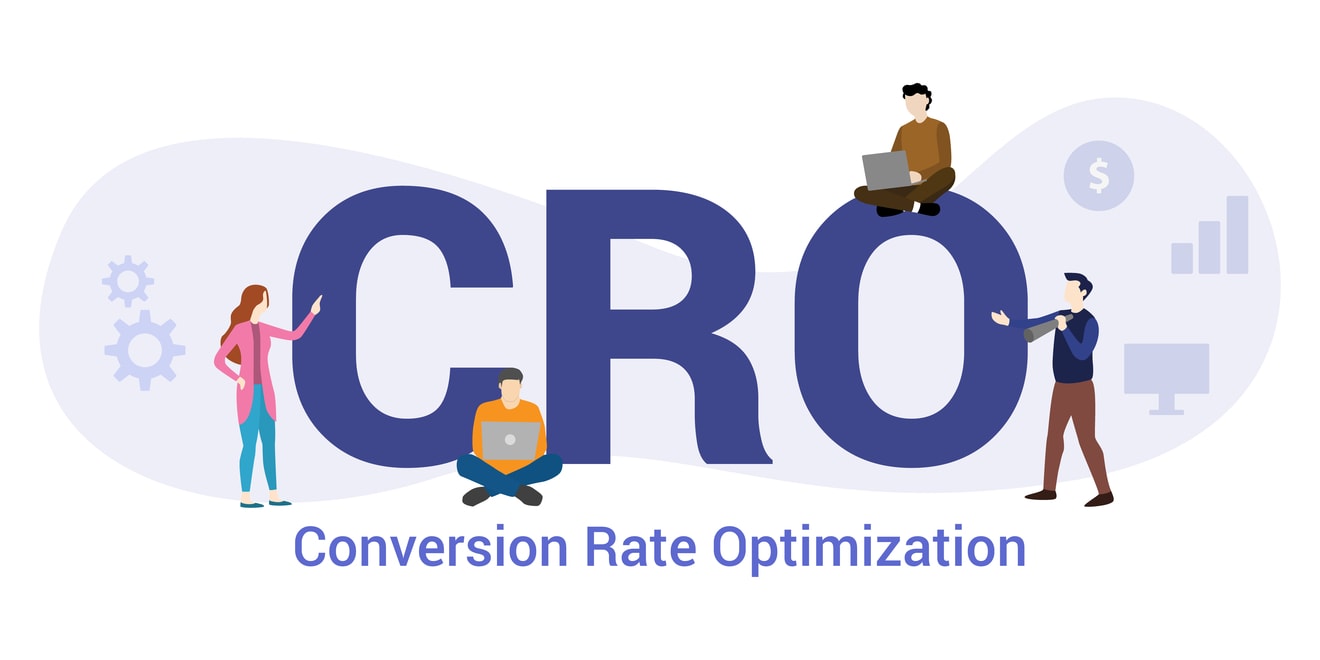With the advent of the internet, the advertising business model has changed a lot. Now, people do not go for all-out TV advertising; people go for CVR marketing. A large number of users were able to access a global audience, and it was this new medium that drove profit for many levels of advertisers.
However, this profit also came with an increase in competition due to the many channels, companies, and mediums that we can reach an audience through their targeted marketing.
CVR marketing targets a specific audience and achieves a higher conversion rate than traditional advertising. With the ability to analyze data, such as a click-through rate (CTR), and generate revenue at a certain level of detail. Ad tech companies can pinpoint specific areas where their target audience is and then target that audience with relevant advertising and offers.
Since the concept of CVR marketing has been around for a while, there are some widely used methods for targeting and measuring conversion rates, with one of the most commonly referred to being marketing ROI.
In CVR Marketing, a customer is considered a valuable asset. Focusing on them is essential to achieving a successful conversion rate, which is why several businesses also use this concept to measure the success of a marketing campaign.
In this article, we will focus on CVR Marketing and how to use it to skyrocket your conversions.
What is CVR Marketing?
CVR stands for customer value ratio and refers to the number of customers a company generates over a given period. This can be a period ranging from 1 day to long-term, but most often, it is used as a short-term measurement that lasts for a few months, three months, and one year.
CVR- Marketing ROI is a standard CVR metric that can measure the success of a marketing campaign. It is also used to set customer acquisition costs (CAC).
In other words, it measures how many new customers you get for each dollar you spend on advertising and measures individual campaign performance, be it is your app installs or leads generated. ROI generally measures the return on investment of a marketing campaign in terms of revenue generated from the ads or promotional campaigns.
While the CVR is calculated by dividing the number of customers acquired over the total advertising budget (CVR formula), which includes CAC as well. As a result, this metric shows how much money you can spend with a particular medium and achieve a certain level of conversion. Then the key performance indicator (KPI) can be determined based on the number of customers acquired.
Since CVR is one of the measures used for measuring marketing ROI, its benefits are apparent. CVR lets you compare the effectiveness of various mediums and campaigns very closely and can help you decide whether to spend more or less in that particular medium.
Do you need help implementing CVR marketing to skyrocket your conversions?
Why is Your Conversion Rate Significant?
Now, let’s look at why CVR Marketing is essential in conversion rate.
It helps in comparing different ad campaign options.
One of the primary benefits of CVR Marketing is that it allows comparing marketing approaches between different campaigns and media efficiently because it considers the customer acquisition cost on a per-customer basis.
For example, if you compare two types of campaigns with the same CVR level (higher CVR value means higher costs per customer) but different ad lengths or content, one will be cheaper than the other. And the landing page makes all the difference in this case. This is why the line of conversion rate is more meaningful.
And, if you can create different CVR levels for other ad campaigns, it will allow you to compare the effectiveness of various bundles of ads.
It helps in defining a customer value equation.
Using CVR Marketing, you can calculate a customer value equation that will help you analyze your business, calculate customer lifetime value (CLV) for each customer and compare it with competitors.
For example, if you know the gross margin on a product and the average CLV over some time, you can use CVR- Marketing to see how much each customer is worth your business. You can compare this value with your competitors, take their profit and top-line growth rate into account, and then define an ideal CLV that they should not be more than.
And finally, CVR marketing efforts can help you make cost-effective decisions based on marketing ROI.
It helps in defining the useful lifetime of a customer.
Another exciting benefit of CVR Marketing is that it allows you to define a valid lifetime. This is extremely important, as it helps you determine the amount of money you will have to spend on customer acquisition and retention for your business. Plus, the value proposition with which you will lock customers and get total customer lifetime value.
It helps in choosing a customer lifetime value versus customer acquisition cost.
CVR Marketing helps you choose the best way to acquire customers: by sticking with high-cost per-customer business models or diversifying your efforts, and finding cheaper ways to reach new customers and get more revenue per customer, even though you will get them with slightly lower revenue numbers initially until they grow into larger revenue generators.
It makes the ad creative development process more efficient.
CVR Marketing allows you to define various ad creative options and test them in a controlled setting to reduce the amount of wasted advertising budget on irrelevant ads. This means that companies that use this model can easily maintain creative consistency over time and still cost-effectively acquire customers with minimal or zero investment in ad development and ad telling.
CTR vs. CVR: What is The Difference?
Many people might be wondering: what is the difference between CTR and CVR?
In its basic form, the CVR stands for Customer Value. This value is calculated by taking each customer’s lifetime revenue or per customer or average lifetime revenue for each customer and multiplying it by a multiplier (which can be found in Adwords settings).
This number represents the average amount of money it would take to retain that customer for the rest of their entire lifetime.
The difference between CTR and CVR is that CTR stands for click-through rate, which represents how many clicks a given advertisement receives from a single visitor (or unique visitor).
Whereas CVR stands for cost-per-customer, calculates how much it costs to acquire each new customer. While the two goals are different, marketers often try to find ways to improve both metrics simultaneously.
And the space in which CTR and CVR are used is not homogeneous. There are algorithms for CVR that have been developed, like the ones by Google, Yahoo!, Facebook, and Microsoft, which all use an optimization algorithm to help online-marketing (digital marketing) companies find which ads to display most frequently or spend their advertising budget on the most effective one so that they get the maximum conversion ratio.
Just take an example, when high-quality product images are used to convey the message of the product, a website visitor is more likely to become a potential buyer. And thus, optimizing for CTR is only half the battle; it is necessary to also optimize for CVR.
Now is the time to leverage CVR marketing and increase your conversions.
How to Use CVR Marketing to Skyrocket Your Conversions
Now, let’s see how to use CVR Marketing to Skyrocket your Conversions:
Take the time to understand your CVR and Lifetime Value.
CTR is an important metric used in advertising. However, it is just one of the many metrics that come into play to improve revenue generation with your website or ad campaign. It is essential to know how to use it properly and account for the other metrics to begin your journey towards increasing your revenue.
Build your CVR Marketing Pipeline.
Begin by identifying revenue drivers for your business (click-through, sales, commissions, etc.). Use that data to determine a strategy for making each of those drivers come together by using the traffic coming from those other drivers (such as email or direct emails).
For example, you may want to implement CVR marketing on specific keywords that are responsible for generating a lot of traffic and giving you a lot of profit per click (for example, “digital cameras” or the generic term “computers”). In marketing funnel jargon, this is often called a “funnel” strategy.
Once you have identified which keywords are driving your traffic and money, start testing new advertising campaigns utilizing this information.
Set up your AdWords campaigns.
Set up several ad groups with different bid amounts and CPCs. Set each campaign to test out a different combination of ads, bids, and keywords. Then start analyzing the performance over time for each campaign to see which targeting options are best for your business objectives.
Set up your Facebook campaigns.
Set up a Facebook ad campaign with many different targeting options. The aim here is to find the combination of targeting choices that maximize the profit per click and find out which ad options are best in generating clicks for frequent visitors.
Set up your marketing automation & email campaigns.
CTR Marketing works well with marketing automation and email campaign tools since they allow you to send messages based on previous engagement with the website or email(s) necessary to your business goals.
As you start using these tools, set up segments using CVR data and begin testing out different combinations of actions based on that data to see which ones work best for generating higher revenues or conversions (such as visits and sales).
Test out analytics & conversion tracking tools.
Set up analytics and conversion tracking tools to track and analyze the results of your CTR marketing campaigns over time. Make sure to set up delayed reports based on specific time frames for each of these reports and segment reports across multiple channels and multiple key performance indicators (KPIs). Determine which options allow you to see the best data in the different KPI views and drill down into your data.
Identify new revenue opportunities / new traffic sources.
Once you have tracked enough data over some time with CTR marketing, and once you know the KPIs that you want to be measuring with your analytics toolset, identify new revenue sources that can be optimized with your marketing efforts based on CVR Marketing data.
Final Words on CVR Marketing
CVR Marketing data is not only robust. It is also straightforward to implement into your business. As your marketing efforts and analytics tools mature over time and you begin applying more of the data you’ve collected into new marketing opportunities, CVR Marketing becomes a powerful and lucrative toolset for growing your business.
So, what are you waiting for? Give CVR Marketing a try today!
Growth Hackers is among the best conversion rate optimization agencies helping businesses from all over the world grow. There is no fluff with Growth Hackers. We help entrepreneurs and business owners maximize CVR marketing, generate qualified leads, optimize their conversion rate, gather and analyze data analytics, acquire and retain users and increase sales. We go further than brand awareness and exposure. We make sure that the strategies we implement move the needle so your business grow, strive and succeed. If you too want your business to reach new heights, contact Growth Hackers today so we can discuss about your brand and create a custom growth plan for you. You’re just one click away to skyrocket your business.








